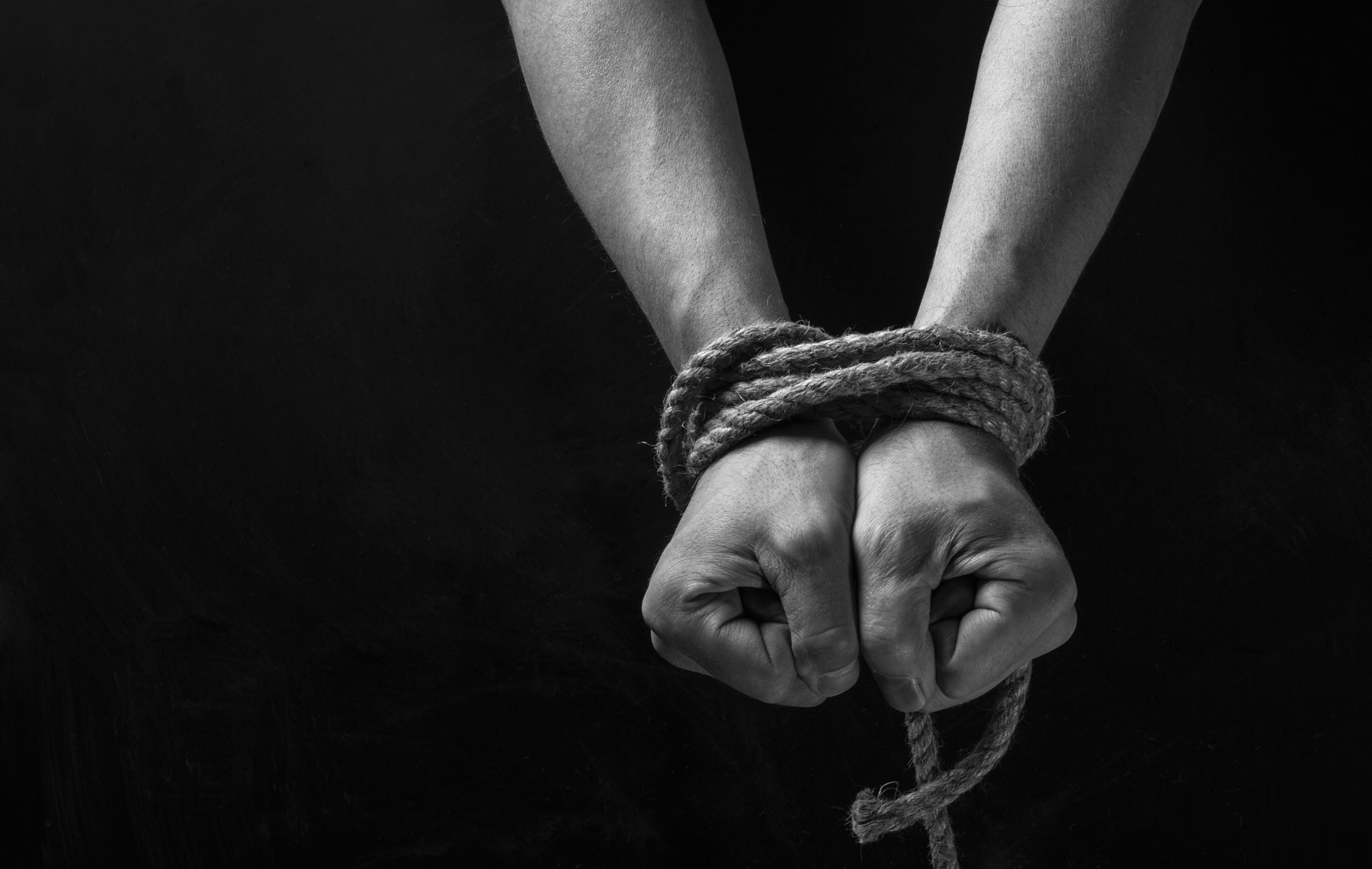
While enjoying a seder at a friend’s house, I watched a father tell his 5-year-old daughter the story of Passover.
“The Jews were slaves in Egypt,” he said. “Do you know what a slave is?” The little girl didn’t. “It’s when someone else owns you and forces you to do stuff you don’t want to,” he explained. “Do you ever feel like a slave, Antonia?” She nodded, still mad that she wasn’t allowed to eat the macaroons before dinner.
Now, telling the story of Exodus isn’t quite like reading “Goodnight Moon” to your toddler. The story of Passover is graphic. It begins with an enslaved woman sending her baby down a river in hopes he will not be fed to crocodiles. But for our people, it’s necessary to put the kids in front of “The Prince of Egypt,” which portrays these horrors in cartoons (and an exceptional soundtrack) so they can understand the slavery we endured. Only that way can they understand the message of Passover: to value freedom and to break chains.
In 2019, far too many chains remain locked. An estimated 40.3 million people are currently enslaved around the world, according to the International Labour Organization. That’s more than double the global Jewish population.
The chattel slavery of the Israelites in Egypt is very much alive today. During the Libyan civil war in 2017, a video of men being sold at auction for $400 each went viral. In Mauritania, where slavery is illegal but widely ignored, local human rights organizations believe up to 20% of the population — 800,000 human beings — live in servitude.
Meanwhile, in other countries people are enslaved through debt bondage, in which those who borrow money are forced to work off the debt through forced labor, regardless how inhumane. This practice is primarily inflicted upon migrants, who are seized into servitude in exchange for stay permits. In Salerno, Italy, 35 people are being investigated for enslaving immigrants and earning 6 million euros off their labor. With the rise of anti-immigrant movements in the West, these populations are becoming increasingly vulnerable.
While Western policies place a tremendous burden on refugees to enter democratic nations, totalitarian governments are enslaving their own through conscription. The 2018 Global Slavery Index estimated that North Korea’s regime had shoved about 2.8 million of its citizens into labor camps, with men working in construction and women sewing in sweatshops. The New York Times reported that China is subjecting its Muslim and Jewish citizens to forced labor in internment camps, where they are sent to impose assimilation into secular Chinese life.
Meanwhile, in other countries, slavery has taken the form of child marriage. According to Anti-Slavery International, wedding vows often operate as a shield for those who wish to forcibly wed and exploit children into their adult lives. Regularly, underage girls are taken by warlords as tribute from their families.
According to UNICEF, 400 million women in the world are married before they are adults, meaning 41% of the global female population is at risk of living in servitude. However, in 93 countries, bondage through marriage remains legal. Why? Authorities contend they are more concerned with heartbreak than human rights. One court in India defended child marriage because if it were outlawed “judges would be left to deal with broken hearts, weeping daughters, devastated parents and petrified young husbands … chased by serious criminal cases, when their sin is that they fell in love.”
But child brides don’t even understand what romantic love is. “I was so young I didn’t even know what marriage meant when I got married,” explained an underage bride from Bangladesh. “Even if I get money, I come home and give it to my husband. If I don’t give him the money, he beats me.”
However, slavery is not a foreign issue. It’s happening right now in the United States.
Though we may dress it up as “human trafficking,” America is home to 400,000 slaves.
“In 2019, far too many chains remain locked. An estimated 40.3 million people are currently enslaved around the world, according to the International Labour Organization.”
Rather than being forced to build pyramids, our people are being sold as sex objects. While some Americans engage in the industry of stripping, pornography and prostitution by choice, for many people, sex work is not a choice, it’s rape.
In most conversations about sex trafficking in the U.S., we assume the victims are Vietnamese women being shipped over in barges — refugees and immigrants who were brought into the United States by smugglers who now abuse them. This is a dilemma, but a great deal of sex trafficking survivors are American children. According to ECPAT-USA, a nonprofit working to end commercial sexual exploitation of children, the average age of a child who enters street prostitution is 12 to 14 years old. These children are either enslaved by their own parents or are kidnapped. Not only are sex trafficking victims subjected to regular sexual assault, but their enslavers often beat and starve them.
“In the dictionary, the definition of slavery is the ‘state of one bound in servitude.’ If someone sells you to someone else, is that not slavery?” said Tina Frundt, who was forced into prostitution by her boyfriend when she was 14. “If someone forces you to do things against your will and you are not allowed to leave, is that not slavery? Then I ask you why, when pimps traffic young women and girls on the streets of America, isn’t this a form of modern-day slavery?”
Of course, what people like Frundt go through is against the law. But it is still happening, widely unnoticed. It’s unclear exactly how many Americans are being trafficked for sex in the $150 billion industry. But when authorities bust rings of pimps and prostitutes, they often prosecute and detain trafficking victims for engaging in prostitution, even if they are minors, according to the U.S. State Department’s 2015 trafficking report.
If these modern-day slaves are convicted and imprisoned, the cycle of bondage doesn’t end, it just becomes legal.
Although slavery in the U.S. was outlawed in 1865, not all slavery is a crime. In fact, it’s how we punish crime. Through the mass incarceration of black and Latino Americans, the government has found a way to keep slavery alive.
“Neither slavery nor involuntary servitude, except as a punishment for crime whereof the party shall have been duly convicted, shall exist within the United States, or any place subject to their jurisdiction,” says the 13th Amendment to the Constitution, enabling slavery to remain as the modern prison system. The incarceration of black and Latino citizens is rampant because of a racist culture that depicts them as criminals and superpredators, a justice system that has harsher mandatory minimums for using drugs more popular in communities of color, and calculated crackdowns disguised as part of the war on crime and drugs.
For many, prison is not just a punishment but a means of enslavement.
In Texas, Georgia, Alabama and Arkansas, incarcerated Americas are forced to perform labor for free. The Texas Department of Criminal Justice, which confines the largest population of convicted criminals in America, has its inmates raise, process and harvest livestock; manufacture soap and clothes; and cultivate 24 kinds of crops. Without making any income, prisoners work 12 hour days as painters, electricians, maintenance workers, cooks, custodians and dog trainers.
The enslavement of predominantly black and brown Americans through mass incarceration is one of the most insidious forms of racism in this country. While in the past the Jewish, black and brown communities have bonded through our shared history of slavery, the legacy of slavery lives on for people of color.
There’s no doubt modern-day slavery is difficult to talk about, especially during your Passover seder. We all know it’s considered bad decorum to bring up politics during the holidays, especially conversations that involve heated topics like race, sex abuse, tyranny and immigration.
But Passover, much like being Jewish, is inherently political. It’s not about eating matzo ball soup, it’s about paying homage to the trauma our ancestors survived. It is a ritual stand against slavery, which today, just like in the days of Pharaoh, is a symptom of government policies.
There’s a depraved stereotype that Jews care only about their own oppression. The best resistance to any misconception is to visibly demonstrate its falsehood. Politicizing Passover is our chance to show our empathetic humanitarianism.
During these eight days, empowered by our history of slavery, we should take tangible steps to fight bondage in this modern world, whether by rallying against mass incarceration and the prison-industrial complex, advocating for survivors of sex trafficking, or simply spreading awareness. This means not just applauding our children for reciting the four questions, but asking ourselves even harder ones.
How can we inform our little ones about the devastating realities of slavery in this century? How do we teach them to combat not just human trafficking, but also the blaming of its survivors? How can we persuade our lawmakers to institute alternatives to prison as the default penalty for low-level crimes? How can we causally tell the story of painting our doorways with blood and then discuss that blood and flesh is still being sold in Libya?
Jewish children are outrageously strong. Despite knowing Santa Claus isn’t real, they resist the urge to tell their Christian classmates. They pretend that socks and underwear are substantial gifts. Before hitting puberty, Natalie Portman managed to star in blockbusters. At 11 years old, Naomi Wadler demanded more inclusivity in the national March for Our Lives movement.
Jewish kids are not afraid of much, likely because once a year we tell them one of the most disturbing stories of all — our history. At each Passover table, as we break matzo and break down our history in Egypt, new children learn what a slave is. Although we might have cute finger puppets for each of the Ten Plagues, we’re still describing turning rivers into blood, boils, beasts and, of course, the murder of firstborn children.
Judaism has so many practical and symbolic ways to discuss our history of enslavement. Whether munching on bitter herbs to remind us of the acrimonious life of a slave, or visualizing through Charoset the mortar our ancestors used to make bricks into pyramids, we’ve found a way to make bondage polite dinner conversation.
But there’s still more to discuss.
Let’s start combating modern-day slavery — and start kids on the subject early. Jewish children are strong. We need them to help us free the 10 million other kids still in chains.
Ariel Sobel. is a nationally-recognized writer, filmmaker, and TEDx talker.























 More news and opinions than at a Shabbat dinner, right in your inbox.
More news and opinions than at a Shabbat dinner, right in your inbox.